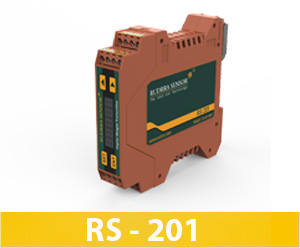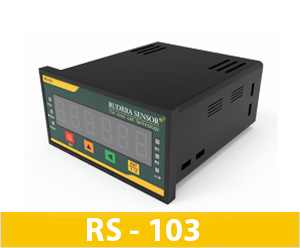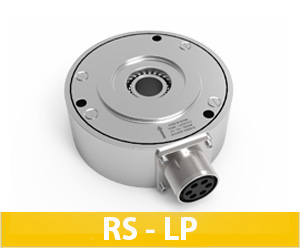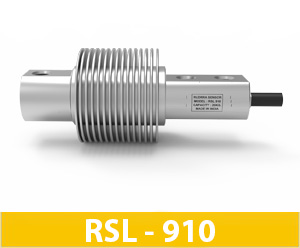In the rapidly evolving industrial landscape, precision, efficiency, and seamless integration are crucial. Digital weight transmitters have emerged as indispensable components, revolutionizing how industries measure and manage weight data. This blog explores how digital weight transmitters enhance industrial automation and provides a guide on choosing the right digital weight transmitter for your specific application.
How Digital Weight Transmitters Enhance Industrial Automation
S-type load cells, named for their distinct S-shaped design, are a type of force transducer that converts mechanical force into an electrical signal. This conversion is achieved through strain gauges affixed to the load cell body, which detect minute deformations under load and generate corresponding electrical signals.
1. Enhanced Accuracy and Precision
Digital weight transmitters convert the analog signal from a load cell into a digital output, minimizing errors associated with analog transmission. This ensures high accuracy and precision, which are critical for applications requiring reliable data for process control and quality assurance.
2. Real-Time Data Processing
In dynamic industrial environments, the ability to process and transmit data in real-time is essential. Digital weight transmitters enable immediate adjustments and optimizations in processes, leading to improved efficiency and reduced waste.
3. Seamless Integration with Control Systems
Digital weight transmitters are designed to integrate seamlessly with industrial control systems like Programmable Logic Controllers (PLCs) and Supervisory Control and Data Acquisition (SCADA) systems. This integration allows centralized monitoring and control of weight data across various production stages, enhancing overall system efficiency.
4. Advanced Communication Protocols
Supporting various communication protocols such as Ethernet, Modbus, and Profibus, digital weight transmitters offer flexible and reliable data exchange within industrial networks. This compatibility ensures smooth communication between different components of the automation system.
5. Scalability and Flexibility
Digital weight transmitters are scalable, making them suitable for both small-scale operations and large industrial setups. Their flexibility allows easy expansion and adaptation to evolving industrial needs, ensuring long-term utility.
6.Diagnostic Capabilities
Many digital weight transmitters come with built-in diagnostic tools that monitor the health and performance of the weighing system. These tools help in early detection of issues, reducing downtime and maintenance costs.
Applications in Industrial Automation
Manufacturing:
Used in processes like mixing, batching, and filling, where precise weight measurements are crucial for product quality.
Food and Beverage Industry:
Ensures accurate portioning, packaging, and quality control, maintaining compliance with industry standards.
Pharmaceuticals:
Essential for the precise measurement of ingredients, ensuring the efficacy and safety of medications.
Logistics and Material Handling:
Used for weighing packages, managing inventory, and optimizing load distribution, enhancing operational efficiency.
Agriculture:
Applications include livestock weighing, feed management, and crop processing, contributing to improved productivity.
Choosing the Right Digital Weight Transmitter for Your Weighing System
Selecting the right digital weight transmitter is vital for achieving accurate measurements and seamless integration. Here are key considerations to guide your choice:
1. Accuracy and Resolution
– Accuracy Requirements: Determine the required level of accuracy for your application. High-precision applications need transmitters with low error margins.
– Resolution: Ensure the transmitter provides adequate resolution to detect small changes in weight, essential for applications where minor variations matter.
2. Load Capacity
– Safety Margin: Choose a transmitter with a capacity that provides a safety margin above the maximum expected load, typically 1.5 to 2 times the maximum load.
– Range of Use: Ensure the transmitter can accurately measure throughout the entire load range.
3. Environmental Considerations
– Temperature Range: The transmitter should operate within the expected temperature range of your application. Temperature fluctuations can affect accuracy.
– Protection Rating: Look for appropriate IP (Ingress Protection) ratings if the application involves exposure to dust, moisture, or chemicals.
– Material: Choose materials that withstand environmental conditions, such as stainless steel for corrosion resistance.
4. Construction and Mounting
– Mounting Options: Ensure the transmitter offers compatible mounting options. Proper mounting is crucial for accurate measurements.
– Size and Shape: Consider physical dimensions and shape to ensure the transmitter fits within system constraints.
5. Electrical Considerations
– Output Signal: Verify the type of output signal (analog or digital) and ensure compatibility with your system.
– Excitation Voltage: Check the required excitation voltage and ensure your system can provide it.
– Cable Length and Connectivity: Consider the length of the cable and the type of connectors needed for your system.
6. Manufacturer Reputation and Support
– Quality and Reliability: Opt for transmitters from reputable manufacturers known for their quality and reliability.
– Technical Support and Warranty: Ensure the manufacturer provides robust technical support and a warranty for troubleshooting and quick issue resolution.
Conclusion
Digital weight transmitters are transforming industrial automation by providing accurate, real-time weight data that integrates seamlessly into control systems. They offer enhanced accuracy, advanced communication capabilities, and diagnostic tools, making them indispensable across various industries. When choosing a digital weight transmitter, consider factors like accuracy, load capacity, environmental conditions, construction, and electrical compatibility to ensure optimal performance and reliability. By selecting the right transmitter, you can achieve greater efficiency, productivity, and precision in your operations, positioning your business for success in an increasingly competitive market.










